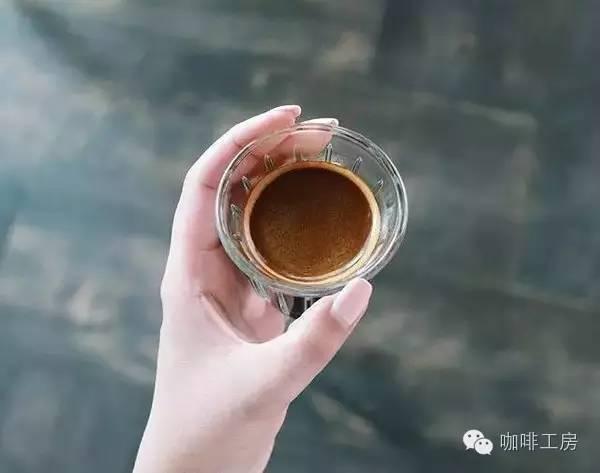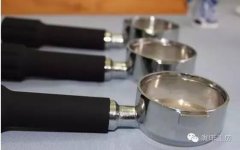Century-old Legend-Hartman Manor in Panama

For professional baristas, please follow the coffee workshop (Wechat official account cafe_style)
The climate makes Panamanian coffee!
An important reason for the unique quality of Panamanian coffee is its microclimate. Bordering Costa Rica and Colombia, Panama's east-west environment allows cold air to flow through the Central Mountains at more than 6500 feet, creating a very unique microclimate in the Boquete and Vol á n Candela regions, making it a major producer of Panamanian coffee. The land around this area is rich in nutrients, and these fertile soils provide perfect conditions for the growth of coffee, creating a large number of unique, high-quality coffee.
2. Why are manor beans so popular
Most of the beans in Manor Coffee are hand-selected Arabica beans, and each batch of beans can be traced back. It can be traced back to which plot of the estate where the beans came from, or which cooperative or which farmer, chasing the flavor of the region. Go to the coffee producing area, step into the coffee farm, it is possible to know the details of the coffee, charming flavor, changeable aroma is how to come from, is the micro-climate, variety, treatment, or coffee farmers do not spread the secret …...
3. The legendary history of Hartmann Manor
Hartman's story, like his coffee, is legendary. Hartman Manor is located in Chilidge, Santa Clara. The founder is called Mr.Alois St. Hartmann (Luis Hartmann). He was born on June 20, 1891 in the Moravilla region of Austria and Hungary in what is now the Czech Republic, and died on May 25, 1970 at the age of 78. After the beginning of World War I, he was abandoned as a little boy. Thanks to his mother, he was able to hide in a ship bound for Pennsylvania and survived.
Both of his brothers died in the war after joining the army. Luis Hartmann and his friends traveled to some countries until he came to Panama in 1911 and settled in Chiriki province in 1912, mainly in the Kendra region. He built his first cabin in the primeval forest. Today's Hartman Manor is a family business founded by Latip Hartman (son of Eloise) in 1940.
In 1966 Latip married Dinola Sandy of Costa Rica. They have five sons, Latipa Jr., Alan, Alexander, Alice and Kelly. Each family member is responsible for the growth management, harvesting and handling of the coffee and the visit to the manor. The family business has a state cup testing laboratory and a sample baking room. Test each batch of coffee fruit with a rigorous attitude and strict standard cups. This ensures that the coffee quality at Hartman Manor is stable and is always looking for progress. Their scientific attitude towards coffee and nearly 100 years of family experience ensure that they produce excellent products, and a family farm that has grown coffee for more than 100 years is itself a legend.
4. Tenacious Catuai
Hartman Manor has a wide variety of coffee, including Typica, Kaddura, Catuai, Bourb ó n, Pacamara, Maragogipe and Geisha. The variety of beans to be introduced today is the tenacious Kaduai.
Kaduai is an artificial hybrid of Kaddura and Mondu Novo. Kaduai has a good ability to resist natural disasters, especially wind and rain. Kaduai tree species are relatively low, compared with other coffee trees, the fruit of Kaduai is stronger and harder to pick. The fruit is both red and yellow. So far, it has not been found that yellow fruit tastes better than red fruit. On the contrary, some people found in the cup test that although the coffee processed by some yellow fruits has good acidity, the cleanliness of the coffee taste is worse than that of the red fruit.
5. Hartmann Manor
When we came to Hartman Manor in Panama, we saw that people growing coffee here always followed the requirements of green protection, and the farm compost was made from pulp and cherry skins. Curious about what kind of coffee taste will be nurtured in such an environment, I can't wait to make a cup of Hartman. Ta is pure, sweet and bright, with a strong honey flavor and stone fruit sweet flavor. Every inch of the mouth has a mellow taste of milk chocolate, even if it is cold. In addition to the local superior climatic conditions, careful cultivation and strict picking, its perfect taste also comes from the special treatment-red wine treatment.
Red wine treatment of coffee beans:
It can also be called red wine treatment, which is inspired by the brewing technology of red wine. At present, only eight estates in Colombia have successfully introduced coffee beans treated with this method to the market. According to the data of these eight estates, we can roughly divide the types of red wine treatment into: acetic acid fermentation (Aerobic aerobic fermentation), lactic acid fermentation (Anaerobuic anaerobic fermentation), mixed fermentation (Mix Fermentation=Aerobic+Anaerobuic).
The traditional treatment method is difficult to control the changeable fermentation degree of coffee beans. But red wine treatment rules can ensure the quality of coffee beans by controlling PH value, even temperature and humidity, and airtight fermentation makes aroma less volatile.
Next, let's talk about the specific process of fermentation. First of all, Colombian farmers carefully pick coffee cherries and carefully select coffee red fruits to ensure that among the coffee cherries selected for processing, the percentage of immature cherries is less than 2%, defective beans less than 3%, and floating beans less than 5%.
The selected coffee cherries are placed in a specific container by the farmer's uncle, which should have a device similar to a red wine fermentation suppository or a single exhaust valve. In this way, carbon dioxide can be spilled through the device to control the concentration of air in the container. At this time, the coffee cherries in the container are fermented with acetic acid, and the beans are relatively bright, clean and citric acid.
Important Notice :
前街咖啡 FrontStreet Coffee has moved to new addredd:
FrontStreet Coffee Address: 315,Donghua East Road,GuangZhou
Tel:020 38364473
- Prev

One more reason to drink coffee-caffeine can lose weight
The caffeine in the health care products can promote the blood and water circulation at the bottom of the skin and help fight against bags under the eyes, puffiness and dark circles under the eyes, but what if I told you that caffeine can not only be used for beauty, but also help you lose weight? Don't doubt it, it's true. Caffeine can help you lose.
- Next

What will be the effect of drinking different amounts of coffee every day?
Professional barista communication Please pay attention to the coffee workshop (Wechat official account cafe_style) drink different amount of coffee every day, what will be the effect? Benefits of one cup of coffee: Greek researchers studied 485 people over the age of 65 and found that one cup of coffee a day can keep arteries healthy and stabilize blood pressure. A survey of 600 volunteers by the University of Bristow in the UK also shows that every
Related
- Beginners will see the "Coffee pull flower" guide!
- What is the difference between ice blog purified milk and ordinary milk coffee?
- Why is the Philippines the largest producer of crops in Liberia?
- For coffee extraction, should the fine powder be retained?
- How does extracted espresso fill pressed powder? How much strength does it take to press the powder?
- How to make jasmine cold extract coffee? Is the jasmine + latte good?
- Will this little toy really make the coffee taste better? How does Lily Drip affect coffee extraction?
- Will the action of slapping the filter cup also affect coffee extraction?
- What's the difference between powder-to-water ratio and powder-to-liquid ratio?
- What is the Ethiopian local species? What does it have to do with Heirloom native species?

